Biology | | Impacts | Detection | Management
Origin and Spread
The spotted lanternfly, Lycorma delicatula, is an invasive species to the United States, first discovered in Pennsylvania in 2014. It was originally from China and southern Asian countries such as India. It is likely to become a serious agricultural pest without natural enemies to keep populations low. It was accidentally introduced into South Korea in 2006 and has spread dramatically to become a major agricultural pest, especially for grape production.
The risk of spread in the northern US was once believed to be low due to cold winters. More recently, however, many eggs and newly hatched nymphs have survived the winter. While not yet in New York, the spotted lanternfly is on the border with Pennsylvania and if it does move into NY and become established, it has the potential to become a significant agricultural pest causing untold physical and economic damage.
.jpg)
.jpg)
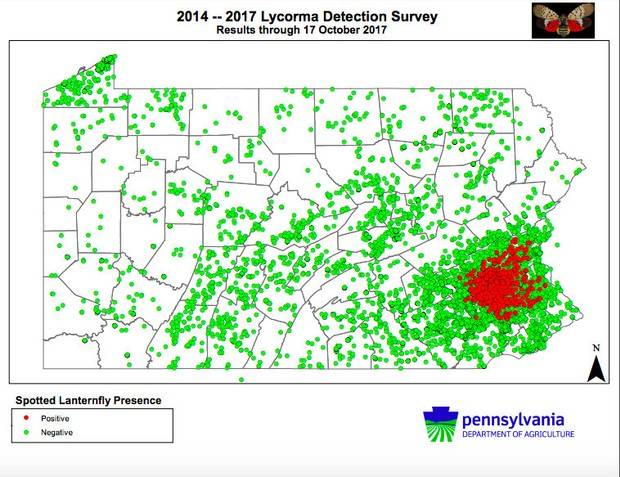
Biology
Spotted lanternfly eggs hatch as nymphs in April and May during the early hours of the day. The black bodied nymphs go through 4 growth phases (instars) before becoming a winged adult. Instars 1-3 have white spotted black bodies, while the 4th instar develops black and red mottling under the white spots. Adult lanternflies have grayish forewings with black spots; the hind wings are red and black spotted on the lower portion and grey and black with a bold white stripe on the upper portion. Adult females are about an inch in length; males are about 4/5ths of an inch. Adults are strong hoppers but weak fliers. In the fall, adults often shift to feeding the invasive Tree of Heaven (Ailanthus altissima). In late September until early winter, adults lay oothecas, or egg sacs, which house up to 30-50 brown seedlike eggs with a shiny, light orange/brown waxy coating. The egg sacs have a smooth, shiny surface. While lanternflies often lay eggs on Tree of Heaven, they will use any smooth, vertical surface including other smooth-barked trees, stones, vehicles, outdoor furniture and other manmade surfaces. Eggs in Pennsylvania overwintered successfully in 2014; once eggs hatch the waxy coating is removed, leaving parallel lines of hatched egg sacs behind.
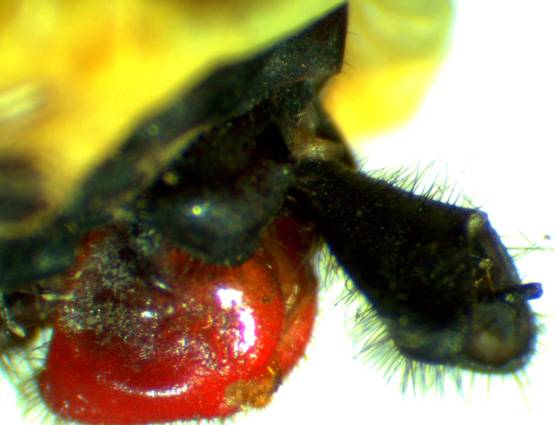
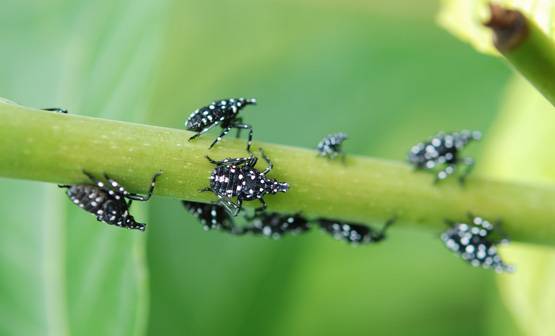
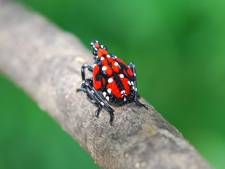
Impacts
Both adults and nymphs use their piercing and sucking mouthparts to eat the phloem tissue of a wide variety of plants in order to obtain nutrients. The insects also excrete a sugary fluid similar to aphid honeydew, which encourages mold and disease growth. In the native range of the spotted lanternfly, these impacts does not normally kill host plants; absence of natural predators, however, can lead to overinfestaton and cause sickness and death in infested plants. Overfeeding by the lanternflies can extract a damaging percentage of the plant’s nutrients, and the dripping sap from lanternfly feeding wounds combined with sugary lanternfly excretia can lead to mold and disease damage.
Spotted lanternflies feed on over 65 species of plants, preferring plants that have high sugar content and toxic metabolites. These include many agricultural species such as fruit vines (grapes), fruit trees (apples, cherries, peaches, pears, plums) and maple trees. Ornamental plants and forestry species including dogwoods, lilacs and pines are also susceptible. The spotted lanternfly has the potential to become a serious agricultural pest and stressor on natural systems.
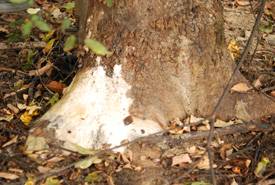
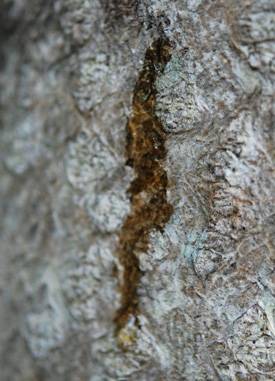
Detection
In the spring, look for the white-spotted black-bodied nymphs and white-spotted, mottled red-and-black fourth instar nymphs feeding on any of the wide variety of host species, both woody and non-woody. In the summer, adults are visible while feeding. Indicators of lanternfly damage are seeping sap wounds on non-woody and woody species, and patches of blackened soil around the plant base. Other insects and molds are also attracted by the sugary secretions caused by the sap and honey dew, including ants, bees and wasps. In the fall, brownish egg sacs can be seen plastered to tree trunks (especially Tree of Heaven) or other smooth surfaces such as stones, vehicles, farm equipment or outdoor furniture.
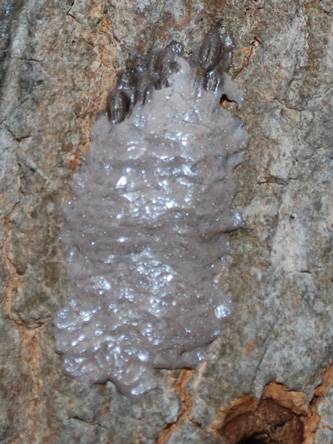
Management
Spotted lanternfly management will vary based on whether the insect is found inside or outside existing quarantine areas. To date, several towns in Pennsylvania including District, Earl, Hereford, Pike, Rockland and Washington and the boroughs of Bally and Bechtelsville are under quarantine. Quarantine areas may expand if the spotted lanternfly is found elsewhere in the US.
Within quarantine areas:
Egg sacs should be scraped off the host surface, soaked in alcohol or hand sanitizer and thrown away.




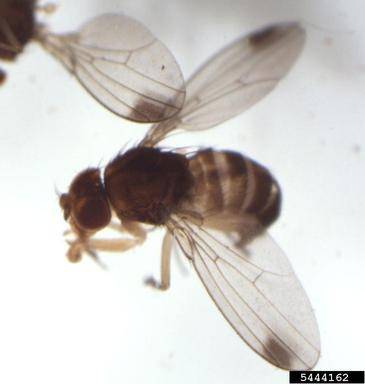
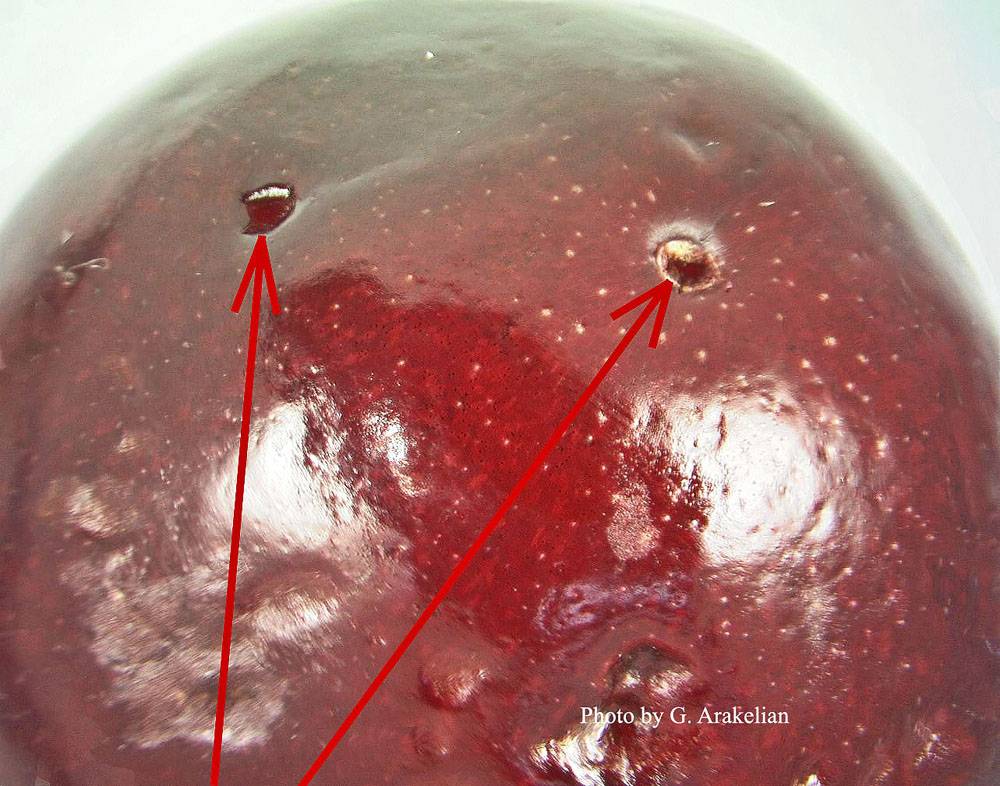
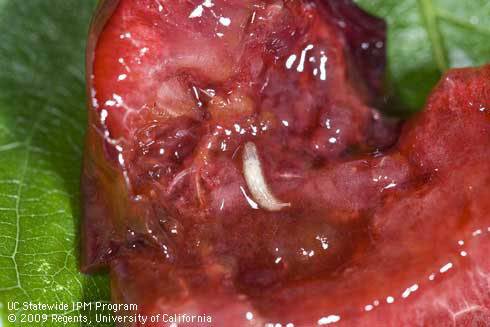
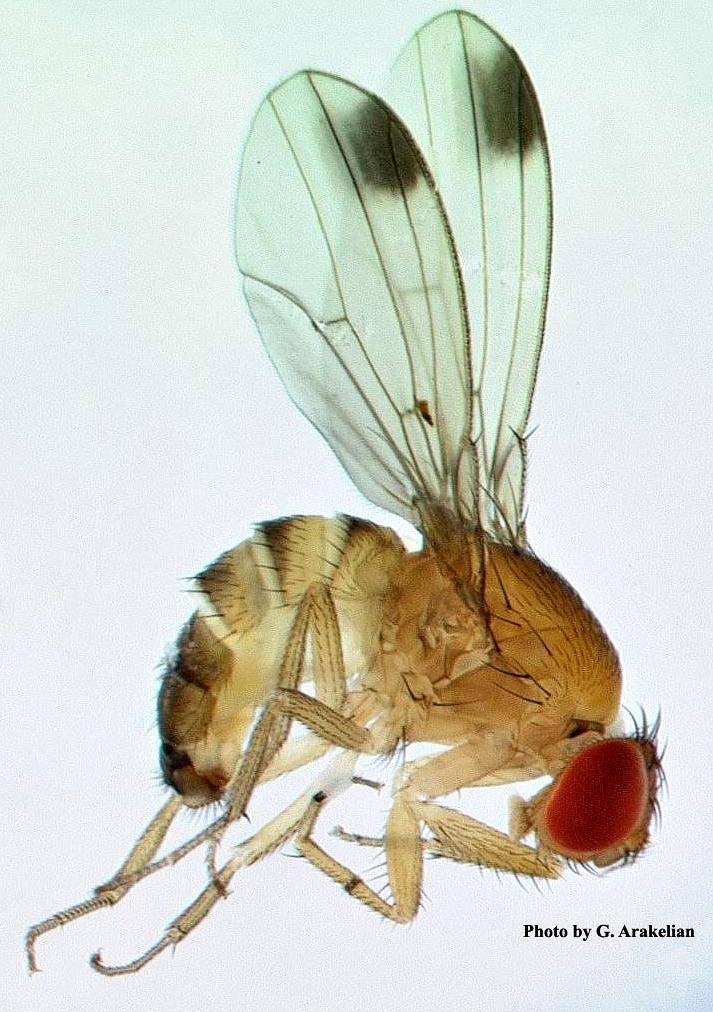
.jpg)